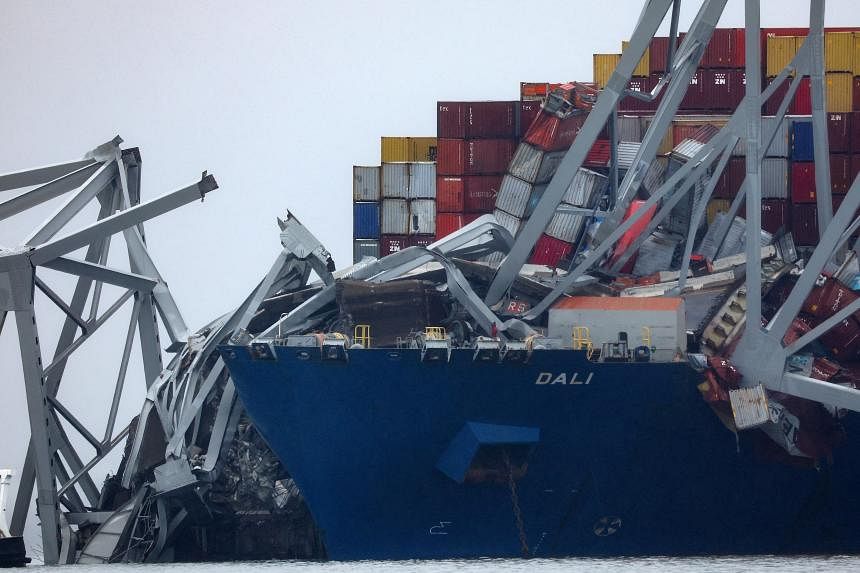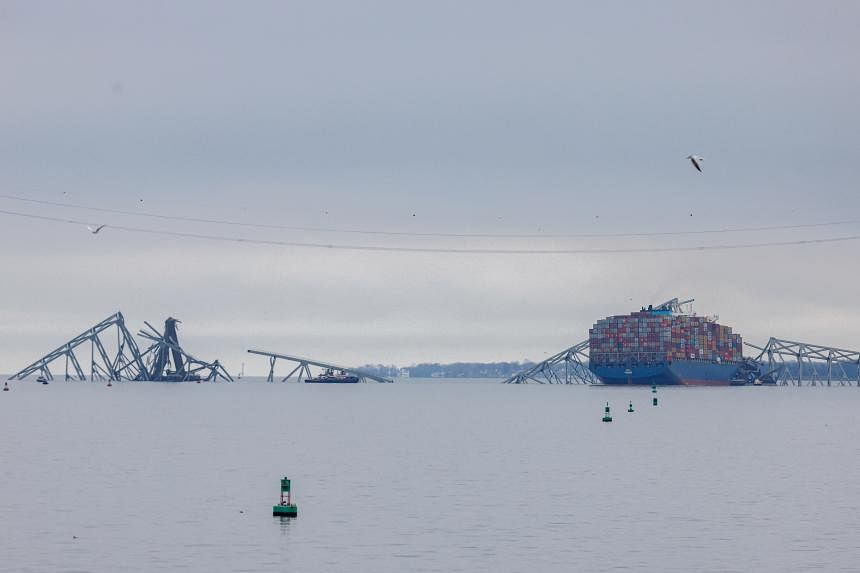NEW YORK - Initially, the voices of the first responders reacting to reports of an incapacitated cargo ship drifting helplessly across Baltimore’s harbour towards the Francis Scott Key Bridge were calm and measured.
“I need one of you guys on the south side, one of you guys on the north side – hold all traffic on the Key Bridge,” said a dispatcher 27 minutes after 1am on March 26 as a massive cargo ship was coming dangerously closer to the bridge.
“There’s a ship approaching that just lost their steering. So until they get that under control, we’ve got to stop all traffic.”
When the dispatcher was told that vehicle traffic to the bridge had been stopped, he followed up with a question.
“Is there a crew working on the bridge right now?”
But just seconds later, before officials could get the workers off the bridge, an urgent voice broke the calm of the Baltimore dispatchers.
“The whole bridge just fell down!”
The back and forth of the official chatter on Baltimore radio frequencies, recorded by Broadcastify, an open-source audio streaming service, offered a glimpse into the minute and a half that officials mobilised before the Singapore-registered ship, the Dali, crashed into and destroyed a key piece of infrastructure of the north-east transportation corridor.
The audio recording underlined the helplessness and vulnerability of the construction crew on the bridge but also put on display the quick actions of officials, working in the dead of night, who swiftly closed off the bridge and prevented an even deadlier outcome.
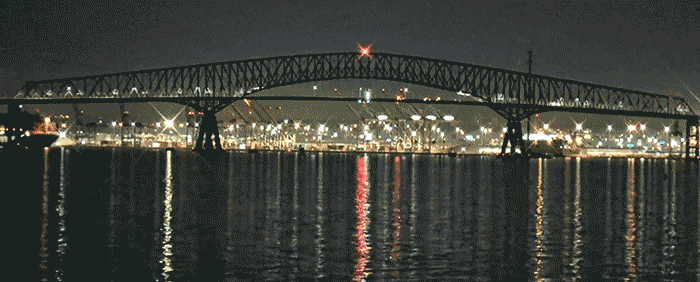
Two people who plunged into the Patapsco River when the bridge crumpled and collapsed were rescued on March 26 by boats that rushed to the scene. On March 27, divers continued to search for the bodies of four other workers.
“They will not be coming back alive,” Mayor Brandon Scott of Baltimore said on a local television station on March 27.
Governor Wes Moore of Maryland described the divers as working in frigid temperatures amid “darkness and mangled metal”.
The men who died worked for Brawner Builders, a construction company based in Baltimore County. They were working through the night, when traffic is light, fixing potholes on the bridge.
The President of Mexico Andres Manuel Lopez Obrador said on March 27 that two of the missing men were Mexican citizens, and that one of the workers who was rescued was also Mexican.
Guatemala’s Foreign Ministry confirmed that two of the other missing men were Guatemalan nationals.
The two other workers presumed killed in the accident were identified as Mr Miguel Luna from El Salvador, married with three children and a resident of Baltimore for nearly two decades; and Mr Maynor Yasir Suazo Sandoval, who emigrated from Honduras more than 17 years ago and was married with two children.
Transportation Secretary Pete Buttigieg said the accident, the most deadly bridge collapse in the United States in more than a decade and a half, will have significant economic impacts for the Port of Baltimore, with its 8,000 workers and industries that rely on the port, which is the leading American hub for auto and other wheeled equipment.
“It’s difficult to overstate the impact of this collision,” Mr Buttigieg said.
He compared the Dali, roughly as long as a city block, to the size of an American aircraft carrier.
“A hundred thousand tonnes, all going into this pier all at once,” he said of the impact on the bridge support structure.
Officials from the National Transportation Safety Board, which is leading the investigation into the accident, boarded the Dali on March 26 night to gather documentation.
They obtained data from the voyage data recorder, the equivalent of an aircraft’s black box, hoping that it could help investigators develop a timeline of events that led up to the strike on the bridge.
The Transport Safety Investigation Bureau in Singapore announced that it would conduct its own investigation into the bridge collapse.
The Maritime and Port Authority of Singapore said in a statement that the country’s Ministry of Transport was not seeking to determine liability, but to identify lessons that could prevent future marine accidents.
Mr Buttigieg said that any private party found liable in the accident “will be held responsible”. He warned of a “long and difficult path” to full recovery of the port and the reconstruction of the bridge.
The Dali, which left port shortly after midnight on March 26 with the help of tugboats, was bound for Sri Lanka, a journey made considerably longer by the decision of many shipping companies to avoid the Suez Canal and the Red Sea, where Houthi rebels have attacked commercial shipping vessels.
As the Dali headed towards the Francis Scott Key Bridge and the Chesapeake Bay, the tugboats left the ship and turned back towards the port.
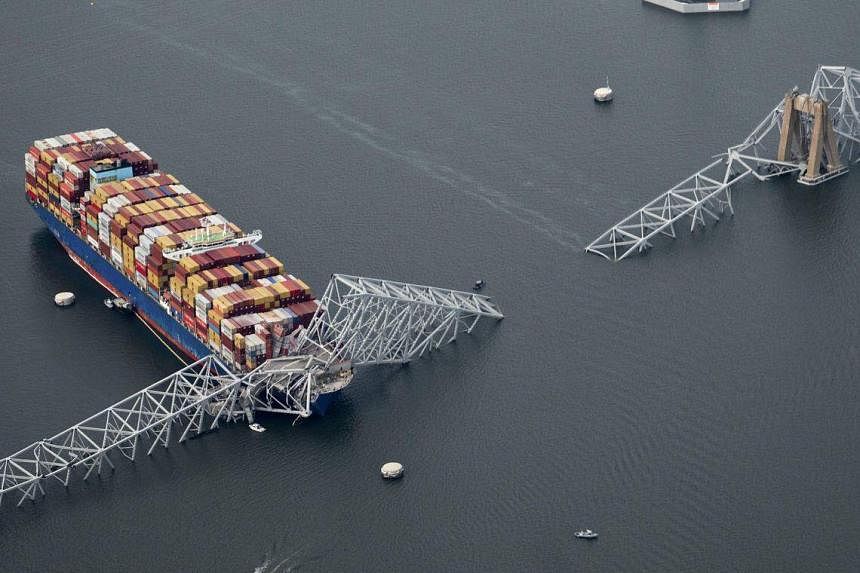
But soon after, the Dali had what Mr Clay Diamond, the executive director of the American Pilots Association, described as a “complete blackout”. A live-streamed video of the vessel approaching the bridge showed the Dali going dark.
Mr Diamond said on March 26 that he had been speaking regularly to the Association of Maryland Pilots and the cause of the ship’s breakdown was unclear.
Vessel data showed that the Dali was travelling at about 8.5 knots before it showed signs of trouble.
That clip is a fraction of the vessel’s top speed, but – given the sheer mass of the ship – the Dali had enormous destructive power.
Mr Buttigieg said that the Francis Scott Key Bridge, built in the 1970s, was “simply not made to withstand a direct impact” from a modern cargo vessel.
He noted that ships frequenting the port today were “orders of magnitude bigger” than ships in use when the bridge was built.
Mr Buttigieg said that goods worth US$100 million (S$135 million) to US$200 million move through the Port of Baltimore daily, and that US$2 million in wages were at stake each day.
Mr Bill Ferguson, a Baltimore Democrat who leads the state Senate in Maryland, said on social media on March 27 that he and Mr Luke Clippinger, a Democratic House delegate, were drafting an emergency Bill to provide income replacement for workers who were affected by the bridge collapse.
Mr Buttigieg said the East Coast would now rely more heavily on ports outside Baltimore, adding that many of the ships that had carried goods through Maryland had also stopped in New York, New Jersey and Virginia.
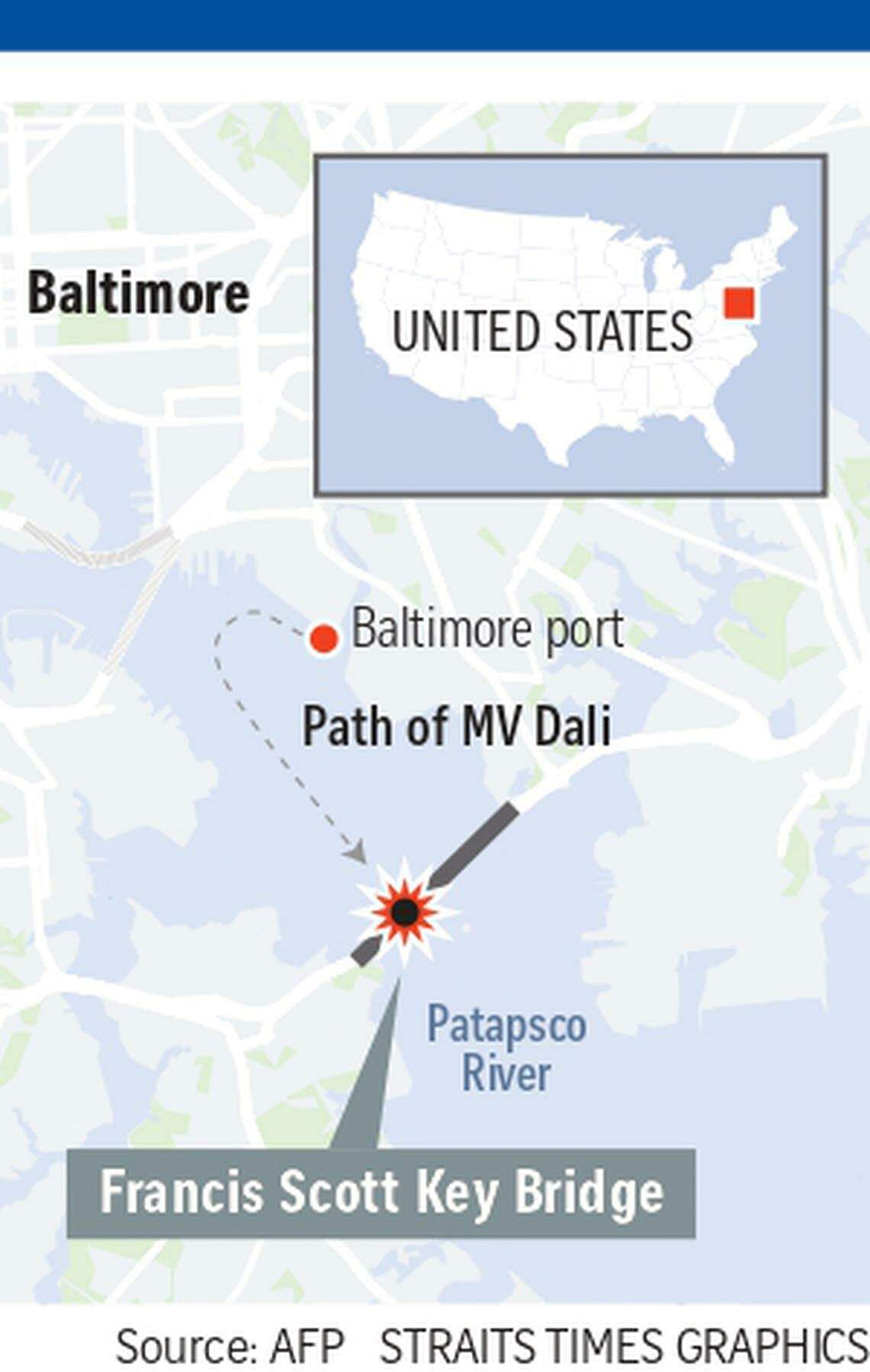
Even as efforts continued to locate the bodies of the workers, the US Army Corps of Engineers said that it was mobilising more than 1,100 engineering, construction, contracting and operations specialists to clear the wreckage of the bridge and unblock the Port of Baltimore’s shipping lane.
Shortly before a massive cargo ship struck the Francis Scott Key Bridge early on March 26, crew members issued a mayday call that allowed officers a few precious minutes to close down the bridge to traffic, likely saving lives.
However, the construction crew fixing potholes was unable to escape in time, and recovery efforts to find the bodies of six workers are continuing.
The effort to rapidly shut down traffic likely prevented more cars from being on the bridge during the collapse, officials said.
Here is a transcript of audio from a Maryland Transportation Authority Police channel, revealing how officers responded to the mayday call and successfully halted traffic.
The audio was posted on the Broadcastify website.
1.27.53am, Speaker 1: I need one of you guys on the south side, one of you guys on the north side, hold all traffic on the Key Bridge. There’s a ship approaching that just lost their steering. So until they get that under control, we’ve got to stop all traffic.
1.28.09am, Speaker 2: (inaudible) I’m en route to the south side.
1.28.13am, Speaker 3: (inaudible) I’m holding traffic now. I was driving, but we stopped prior to the bridge, so I’ll have all outer loop traffic stopped.
1.28.25am, Speaker 1: 10-4, is there a crew working on the bridge right now?
1.28.29am, Speaker 4: (inaudible)
1.28.35am, Speaker 1: Got it.
1.28.37am, Speaker 4: Want me to stop traffic along this side right now?
1.28.42am, Speaker 1: Yeah if we could stop traffic, just make sure no one’s on the bridge right now. I’m not sure where there’s a crew up there. You might want to notify whoever the foreman is, see if we could get them off the bridge temporarily.
1.28.58am, Speaker 4: 10-4, once the other unit gets here I’ll ride up on the bridge. I have all inner loop traffic stopped at this time.
1.29.17am, Speaker 4: Once you get here, I’ll go grab the workers on the Key Bridge and then stop the outer loop.
1.29.27am, Speaker 5: C-13 Dispatch, the whole bridge just fell down! (inaudible) Whoever, everybody, the whole bridge just collapsed.
1.29.35am, Speaker 6: 10-4. Dispatch is direct.
1.29.35am, Speaker 4: That’s correct. (inaudible) First time.
1.29.48am, Speaker 1: Do we know if all traffic was stopped?
1.29.51am, Speaker 4: I can’t get to the other side, sir, the bridge is down. We’re going to have to get somebody on the other side in Anne Arundel County, MSP to get up here and stop traffic coming northbound on the Key Bridge.
1.29.51am, Speaker 5: C13, I’m holding all traffic northbound. NYTIMES
